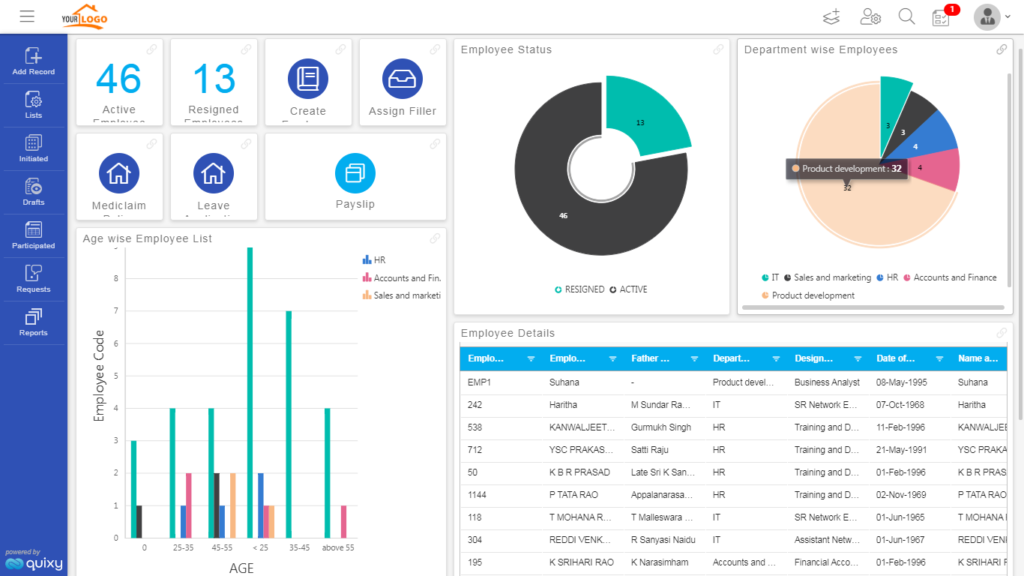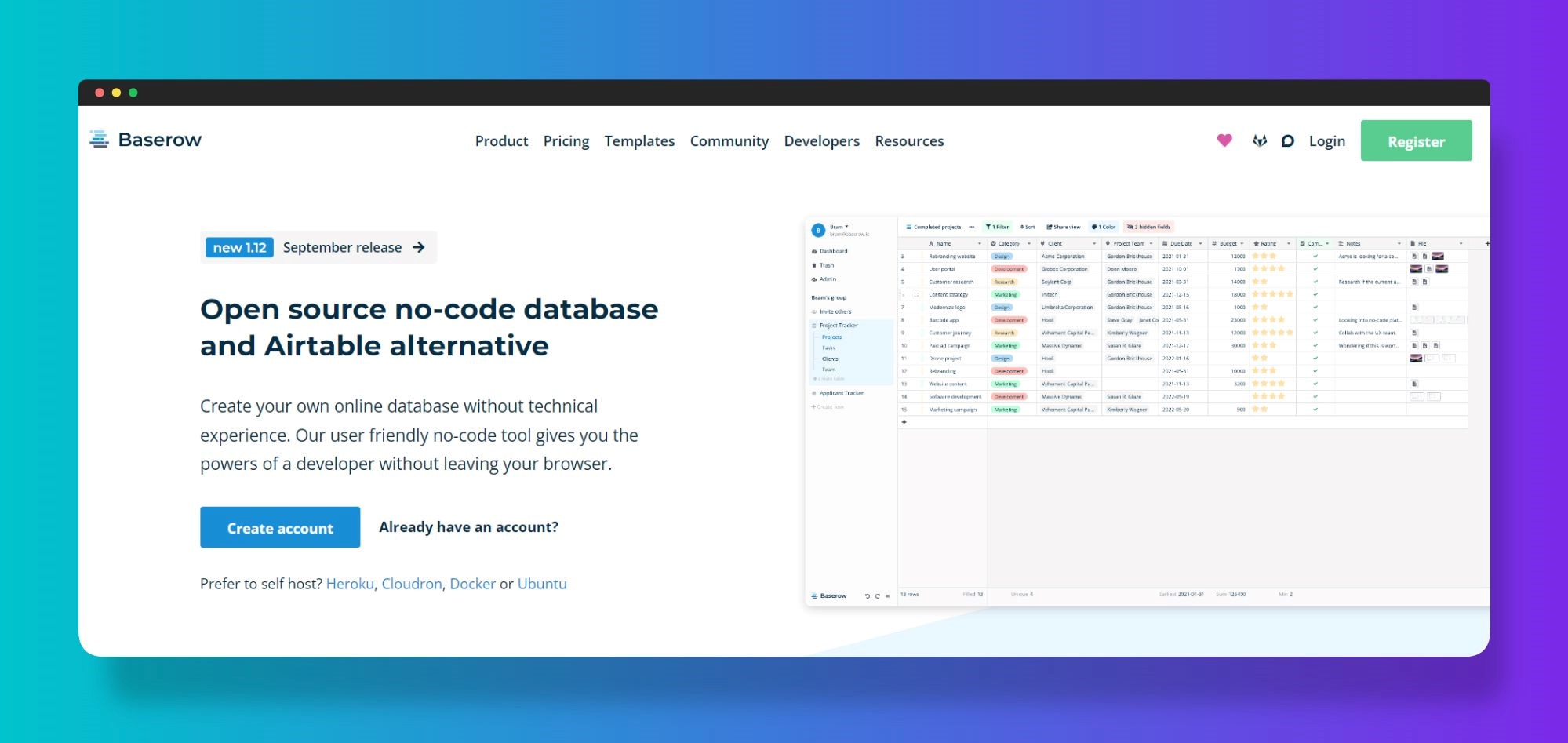No-Code Operating Systems for Open Platform Data Source Production: Save Time and Resources
No-Code Operating Systems for Open Platform Data Source Production: Save Time and Resources
Blog Article
A Comprehensive Guide to Applying Scalable Databases Without the Requirement for Coding Expertise
In the modern landscape of information management, the ability to execute scalable databases without coding proficiency is ending up being significantly important for companies of all dimensions. This overview aims to light up the process, concentrating on straightforward tools and user-friendly user interfaces that demystify data source configuration. By checking out crucial functions, reliable approaches for execution, and ideal practices for recurring management, we will certainly address how even non-technical individuals can confidently browse this complicated terrain. What are the critical components that can absolutely encourage these customers to utilize scalable data sources properly? The answers may redefine your technique to information monitoring.
Recognizing Scalable Databases
In the world of modern-day data monitoring, scalable data sources have actually become a crucial service for organizations seeking to manage enhancing quantities of information successfully. These data sources are created to suit growth by permitting the smooth addition of resources, whether through straight scaling (including a lot more equipments) or upright scaling (upgrading existing equipments) This adaptability is important in today's fast-paced digital landscape, where information is produced at an unmatched rate.
Scalable data sources generally utilize distributed designs, which enable data to be spread across multiple nodes. This distribution not just improves performance yet additionally supplies redundancy, making sure information availability even in the event of equipment failings. Scalability can be a vital element for numerous applications, consisting of shopping platforms, social media sites networks, and huge information analytics, where customer need can fluctuate dramatically.
Moreover, scalable databases typically include durable data consistency designs that balance efficiency and reliability. Organizations has to consider their certain needs, such as read and write speeds, data honesty, and mistake tolerance when choosing a scalable database solution. Inevitably, recognizing the underlying concepts of scalable data sources is necessary for companies intending to prosper in a significantly data-driven world.
Secret Attributes to Look For
When evaluating scalable databases, numerous vital features are critical to making sure optimum efficiency and integrity. Consider the architecture of the data source. A dispersed architecture can enhance scalability by enabling data to be kept across several nodes, promoting seamless information accessibility and handling as demand rises.
An additional critical function is data dividing, which allows reliable administration of large datasets by splitting them right into smaller sized, extra convenient items (no-code). This strategy not just enhances efficiency however also streamlines resource allowance
Furthermore, seek robust replication capacities. This feature ensures data redundancy and high accessibility, minimizing downtime during maintenance or unexpected failings.
Efficiency tracking devices are also important, as they give real-time insights right into system health and operational efficiency, permitting timely changes to maintain ideal efficiency.

User-Friendly Database Devices
Simplicity is an essential element in the style of easy to use database devices, as it improves access for individuals with differing degrees of technical experience. no-code. These tools prioritize intuitive user interfaces, making it possible for users to develop, manage, and query data sources without calling for comprehensive shows knowledge
Trick attributes normally consist of drag-and-drop functionality, aesthetic data modeling, and pre-built design templates that simplify the setup procedure. Such devices commonly use directed tutorials or onboarding procedures that assist in individual interaction and decrease the learning contour. Additionally, seamless integration with preferred information resources and solutions guarantees that users can easily import and export data, better streamlining operations.

In addition, robust support and neighborhood resources, such as online forums and documents, improve the individual experience by supplying assistance when needed. On the whole, user-friendly database tools equip companies to harness the power of scalable databases, making information administration obtainable to everyone included.
Step-by-Step Implementation Overview
Exactly how can organizations properly execute scalable databases to meet their growing information needs? The process starts with recognizing details data demands, including the quantity, variety, and rate of information that will certainly be processed. Next, companies should assess straightforward database tools that provide scalability functions, such as cloud-based services or handled database solutions.
Once the best device is selected, the following step involves setting up the database environment. This includes establishing instances, defining individual approvals, and establishing information structures that align Go Here with business purposes. Organizations must after that move existing data into the brand-new system, guaranteeing information click site honesty and minimal disturbance to procedures.
Post-migration, performing comprehensive testing is vital; this consists of performance testing under various lots conditions to make certain the system can take care of future development - no-code. Furthermore, it is necessary to educate staff on the data source administration user interface to assist in smooth usage
Ideal Practices for Management
Effective management of scalable data sources calls for a calculated technique that prioritizes ongoing monitoring and optimization. To attain this, organizations should execute durable surveillance tools that provide real-time insights right into database efficiency metrics, such as inquiry reaction times, source usage, and purchase throughput. Consistently assessing these metrics can help recognize traffic jams and locations for renovation.

Regular backups and disaster recovery strategies are necessary to protect information honesty and accessibility. Establishing a routine for evaluating these back-ups will certainly make certain a trusted recuperation process in situation of an unexpected failing.
Furthermore, efficiency tuning ought to be a continual process. Changing indexing strategies, optimizing inquiries, and scaling resourcesâEUR" whether vertically or horizontallyâEUR" will certainly assist maintain optimal performance as use needs advance.
Finally, promoting a society of expertise sharing amongst employee will enable continual understanding and adjustment, making sure that the management of scalable databases remains efficient and reliable with time.
Final Thought
To conclude, the implementation of scalable databases can be effectively attained without coding competence with the use of user-friendly interfaces and easy to use devices. By sticking to the laid out methods for setup, data movement, and performance testing, individuals can browse the intricacies of database monitoring easily. Stressing best techniques for ongoing upkeep and collaboration further boosts the capability to manage scalable databases efficiently in a rapidly advancing data-driven setting.
In the contemporary landscape of data monitoring, the capacity to execute scalable data sources without coding competence is ending up being increasingly vital for companies of all sizes.In the world of modern data administration, scalable data sources have actually arised as a crucial service for organizations looking for to manage raising quantities of information efficiently.In addition, scalable databases frequently include robust data uniformity designs that balance efficiency and dependability.How can organizations efficiently carry out scalable data sources to meet their expanding information demands? Next off, companies ought to evaluate easy to use data source devices that offer scalability functions, such as cloud-based services or managed database solutions.
Report this page